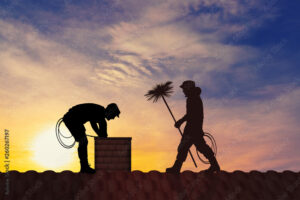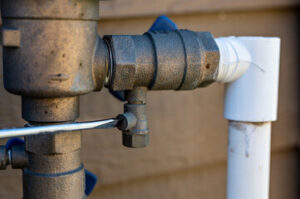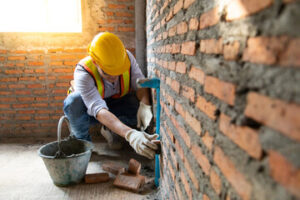Realtor Savannah GA have professional certifications, experience, and a track record of success. They also stay up-to-date on local market trends and the laws that govern real estate.

Ask an agent for references from previous clients. Contact those clients to find out how well they worked with the agent during the buying or selling process.
After passing the state exam and earning your real estate license, it’s time to start building your career. There are many different ways to use your license, but the most common is helping clients buy and sell homes. A professional license is also useful for a number of other business activities, including investing in real estate, managing properties, and providing mortgages.
Each state has its own real estate licensing requirements. You can learn more about the specifics of your state’s requirements by visiting its website or calling its real estate commission. Most states require pre-licensing courses to be completed before you can take the licensing exam. These classes cover everything from the fundamentals of real estate to the laws and regulations that govern the industry. They also prepare you for the state exam, which is usually multiple choice and covers national and local real estate law and practices.
Those who wish to become licensed in New York must complete at least 22.5 hours of coursework before they can take the state exam. These courses must include at least two hours of instruction on cultural competency, two hours of implicit bias training, and 2.5 hours on the topic of ethics in real estate transactions. You must also complete three hours on the subject of fair housing and discrimination.
New York requires that you have a sponsoring broker before you can apply for a real estate license. The broker must agree to supervise you and must submit a signed letter of support to the Department of State along with your application. The letter of support must list your sponsoring broker’s contact information and describe the nature of the relationship. It must be dated within three months of the date on your real estate license application.
When you are ready to take the state exam, make sure that you have all the necessary documentation, including a valid driver’s license and a background check. You should also have Errors and Omissions (E&O) insurance, which protects you from any legal claims that could be filed as a result of your work as a real estate agent. You can purchase E&O coverage from your brokerage or obtain it separately.
National Association of Realtors (NAR) Membership
The National Association of Realtors is a trade association with more than 1.5 million members worldwide. Its membership requirements are strict and regulated by its Code of Ethics, which all members must follow. It also provides a wide range of business tools, research and statistics, and education for its members. Membership in the NAR carries with it prestige and recognition among peers and clients. Real estate agents must pass a licensing exam and complete NAR’s continuing education courses to use the term “realtor” when they represent clients.
In addition to education and business tools, the NAR also collects and maintains real estate-related data. This research is used by journalists, real estate professionals and others to understand market trends and help consumers make informed decisions about real estate transactions. The NAR also advocates for the interests of real estate owners at the local, state and federal level through lobbying efforts.
NAR’s annual dues are typically deducted as a business expense. The association also offers member-only discounts on personal insurance, technology tools and marketing solutions. Members also have access to exclusive real estate research and data, including market activity, sales and prices at the local, regional and metro-market level.
The NAR also publishes a variety of articles and reports on the real estate industry, including a confidence report, an affordability index and an inventory index. The organization also conducts research in the areas of land-use and housing supply, mortgage interest rates and home ownership.
Realtors must be employed by a brokerage that is a member of the NAR. The company must designate one person as the “designated broker.” Each licensed real estate agent then pays an annual fee of $150 to the NAR, which is billed through the broker’s local association. The NAR also imposes an additional $35 “Consumer Advertising Assessment,” which is not deductible.
NAR has three levels of membership – the local or county association, the state and the national association. All members are automatically a member of their local association, as well as the state and national associations. Local association members can choose to belong to more than one state and/or country association.
Code of Ethics
When consumers turn to a Realtor(r) for help buying and selling a property, they expect honesty and integrity. But when backroom deals are made and deceptive tactics fly under the radar, it can leave consumers feeling cheated and distrustful of organized real estate professionals. The Code of Ethics is the National Association of Realtors(r) way of holding members to certain standards and ensuring that consumer interests remain paramount.
The Realtor(r) Code of Ethics includes 17 articles that set the ground rules for professional conduct in the real estate industry. It covers duties to clients and customers, the public, and even fellow Realtors(r). In general, Realtors(r) are required to prioritize their client’s best interest above their own. They must disclose relevant information to all parties, and be truthful in advertising and marketing. They also must meet minimum professional competency standards and stand against discriminatory housing practices.
For instance, Realtors(r) are prohibited from making false or reckless statements about other real estate professionals, their business practices, or the industry as a whole. They are also expected to avoid discrimination based on a client’s race, age, religion, sexual orientation, family status, disability or national origin.
Realtor(r)s are also expected to keep clients informed and make properties available for showings as often as possible. They should also reveal their REALTOR(r) status when discussing a property with another broker and disclose whether the interest is personal or on behalf of a client. And they should share access to the property with other brokers in a timely manner, as long as the owner agrees to it.
Finally, Realtor(r)s should not recommend other products or services to their clients unless it is in the best interest of the client. This is known as the principle of fair dealing. This also applies to recommending mortgage financing, warranty programs, homeowner’s insurance or title insurance.
Realtors(r) who violate the code may be fined or have their membership suspended or revoked by their local REALTOR(r) association. In addition, they may be subject to federal and state civil and criminal penalties. If a consumer believes that a Realtor(r) has violated the Code of Ethics, they should contact the local association or NAR for more information on how to file a complaint.
Brokerage Relationship
A real estate broker is the person who can receive a fee to help consumers buy, sell or lease property. Most brokers have licensed real estate salespeople, or agents, who work on their behalf. These agents may be called subagents or associates. The agent and broker must disclose the nature of their working relationship to customers in a written agreement known as a brokerage disclosure statement. This statement must be provided to a customer at the first contact with a licensee. It must also be conspicuously placed on the property information sheet and on the broker’s business card.
A good brokerage relationship requires mutual respect between the broker and the agent. This can be difficult when the two parties have different goals and approaches to real estate. For example, if you are a new agent who needs to build relationships and connections, your broker might not be as focused on these activities. This can lead to a bad broker-agent relationship.
The law of agency defines the various brokerage relationships that can exist in regulated real estate transactions. There are three main brokerage relationships: Nonrepresentation, Single Agency Relationship and Transaction Brokerage. The brokerage relationship is established when a customer enters into an express written agreement with the brokerage firm to become a client. This is generally accomplished by signing a listing contract or buyer agency agreement. The broker can change the brokerage relationship for a customer at any time by obtaining consent from the customer and by providing the appropriate disclosures of duties.
It is important to understand the brokerage relationship when buying a home or commercial property. This will help you understand the legal responsibilities that your real estate professional owes to you and other parties involved in the transaction.
A good broker-agent relationship is one where both parties have the same goals and approach to real estate. A good broker can guide you through the process and help you find a home or commercial property that is right for you. In addition, a good broker can help you negotiate the best price and terms for your transaction.










 When choosing a pergola, there are many different styles available. Choosing the right type depends on the structure’s design, style, and electricity available. String lights can be a romantic accent, while paper lanterns and chandeliers provide a more sophisticated look. Some pergolas feature fireplaces and fire pits to provide additional lighting and warmth. Pergolas make an excellent outdoor living area.
When choosing a pergola, there are many different styles available. Choosing the right type depends on the structure’s design, style, and electricity available. String lights can be a romantic accent, while paper lanterns and chandeliers provide a more sophisticated look. Some pergolas feature fireplaces and fire pits to provide additional lighting and warmth. Pergolas make an excellent outdoor living area.